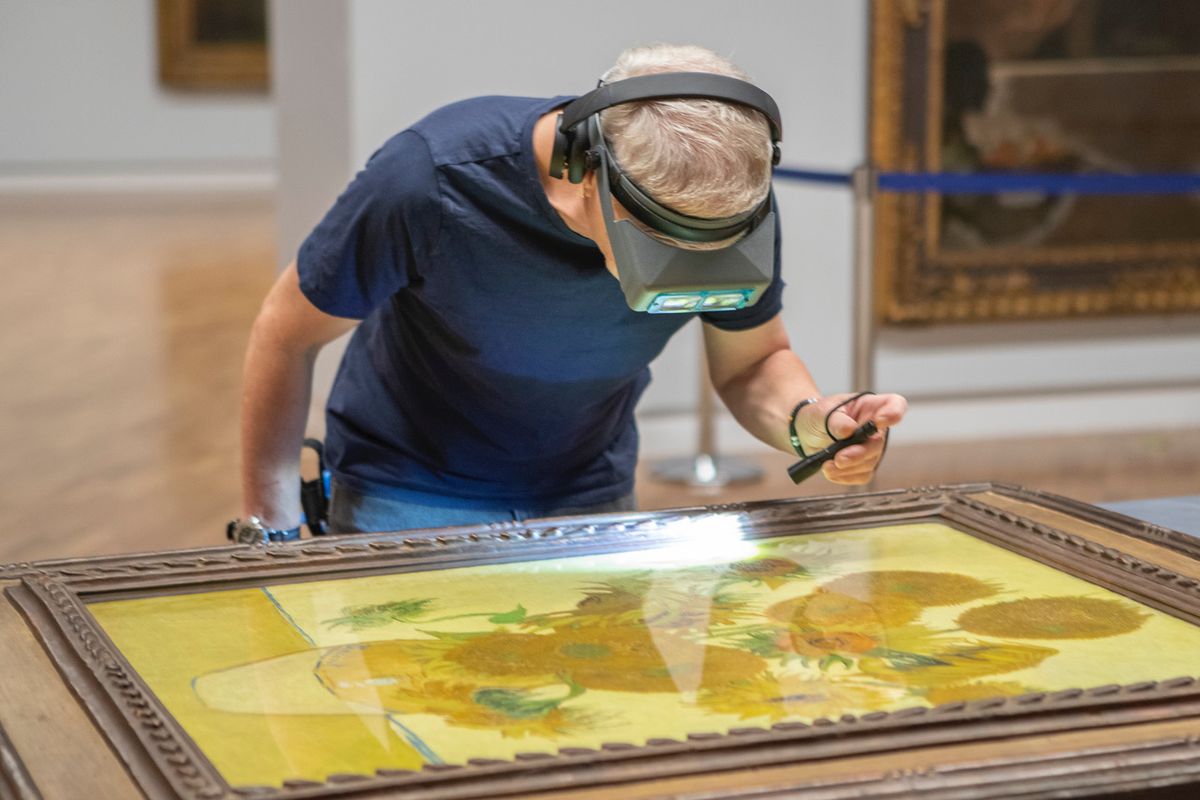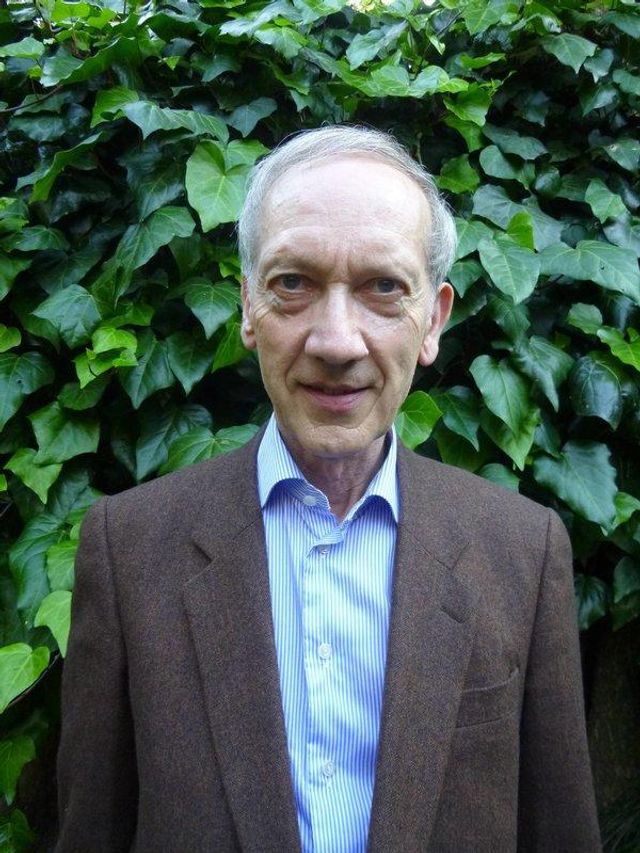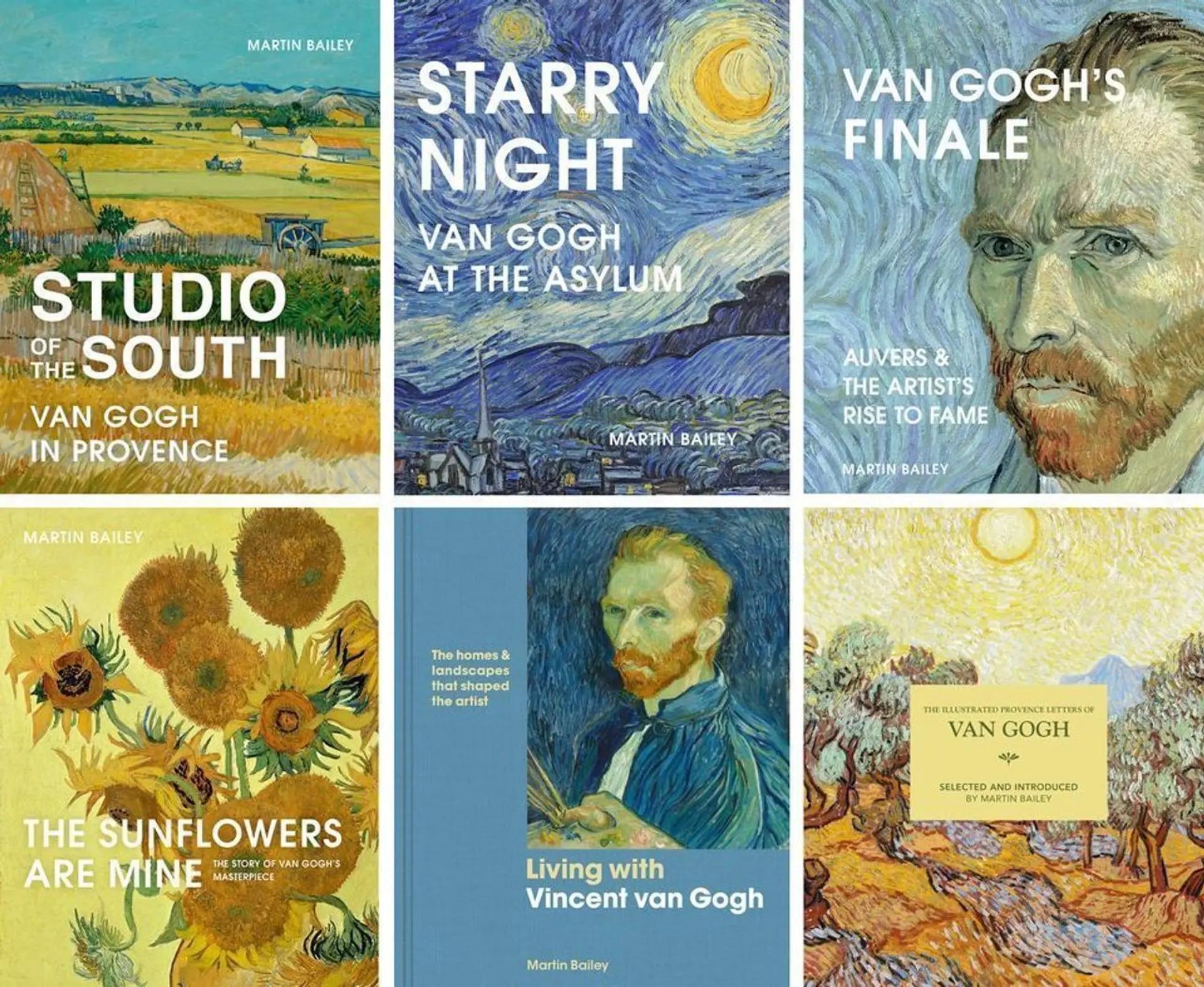Vincent van Gogh’s Sunflowers will go on show today at Canberra’s National Gallery of Australia. It will be the climax in the final room of the exhibition Botticelli to Van Gogh: Masterpieces from the National Gallery, London (until 14 June).
In a message to Australians in the exhibition catalogue, the UK Prime Minister Boris Johnson singled out the show’s star painting—and the pleasure of “having the soul lifted by the explosive yellows and greens of Van Gogh’s favourite and most famous Sunflowers”.
Johnson, never one to forgo a cricketing joke, also reiterated that exchanges between the UK and Australia, cultural and otherwise, are nothing new: “We have codified all manner of sports, taught you the rules and then watched, somewhat bemused, as you taught us how to play.”
The Canberra gallery itself is also something of a belated response to a British innovation. London’s National Gallery was established back in 1824, but the National Gallery of Australia is very much younger, having opened in 1982. The two institutions are now friendly siblings.
The National Gallery is sending 60 major paintings, spanning 450 years, to its Australian counterpart on the last stage of an international tour that began in Japan. Botticelli to Van Gogh was crated up in London just over a year ago, flown to Tokyo and hung at the National Museum of Western Art, all ready to open on 3 March 2020. Then Covid-19 struck, initially in the Far East, with Japanese museums having to shut four days before the show's scheduled opening. The Tokyo presentation had been due to close on 14 June, but it actually opened on 18 June, with an extended run to 18 October.
Tokyo’s new dates rebounded on Osaka’s National Museum of Art, the subsequent venue. Although scheduled to open on 7 July 2020, this was delayed until 3 November, then extended until 31 January this year.
The two Japanese venues were expected to receive around one million visitors, but Covid-19 meant that the number was considerably lower, with an inevitable impact on the finances of the tour.
The Japanese delays then affected the National Gallery of Australia, where it was originally scheduled to open last November and run until 14 March. Instead it is opening on almost the date it was due to close.
Although originally anticipated as a blockbuster in Canberra, with Covid-19 restrictions the Australian gallery can currently only welcome half its normal number of visitors.
The show comprises 60 paintings, but it is the Sunflowers that is the big attraction. The National Gallery’s version, the most important of Van Gogh’s series of still lifes, has only been lent abroad three times since its acquisition nearly a century ago—to Paris in 1955 and Amsterdam in 2002 and 2013.
The origins of the acquisition date back to a visit to the Netherlands by Jim Ede, a young London curator, in October 1923, when he met Vincent’s sister-in-law, Jo Bonger. A few hours after their meeting he wrote her an emotional note, saying that after being shown highlights of the family collection “what touches me most directly are the golden sunflowers”.
On his return to London Ede wrote again, asking whether Bonger might consider selling the Sunflowers to the National Gallery. He pleaded: “It would be exhibited at the fountain head of England’s art—and would be in a place where all the world would see [it] & would really adequately represent the amazing genius of Van Gogh.”
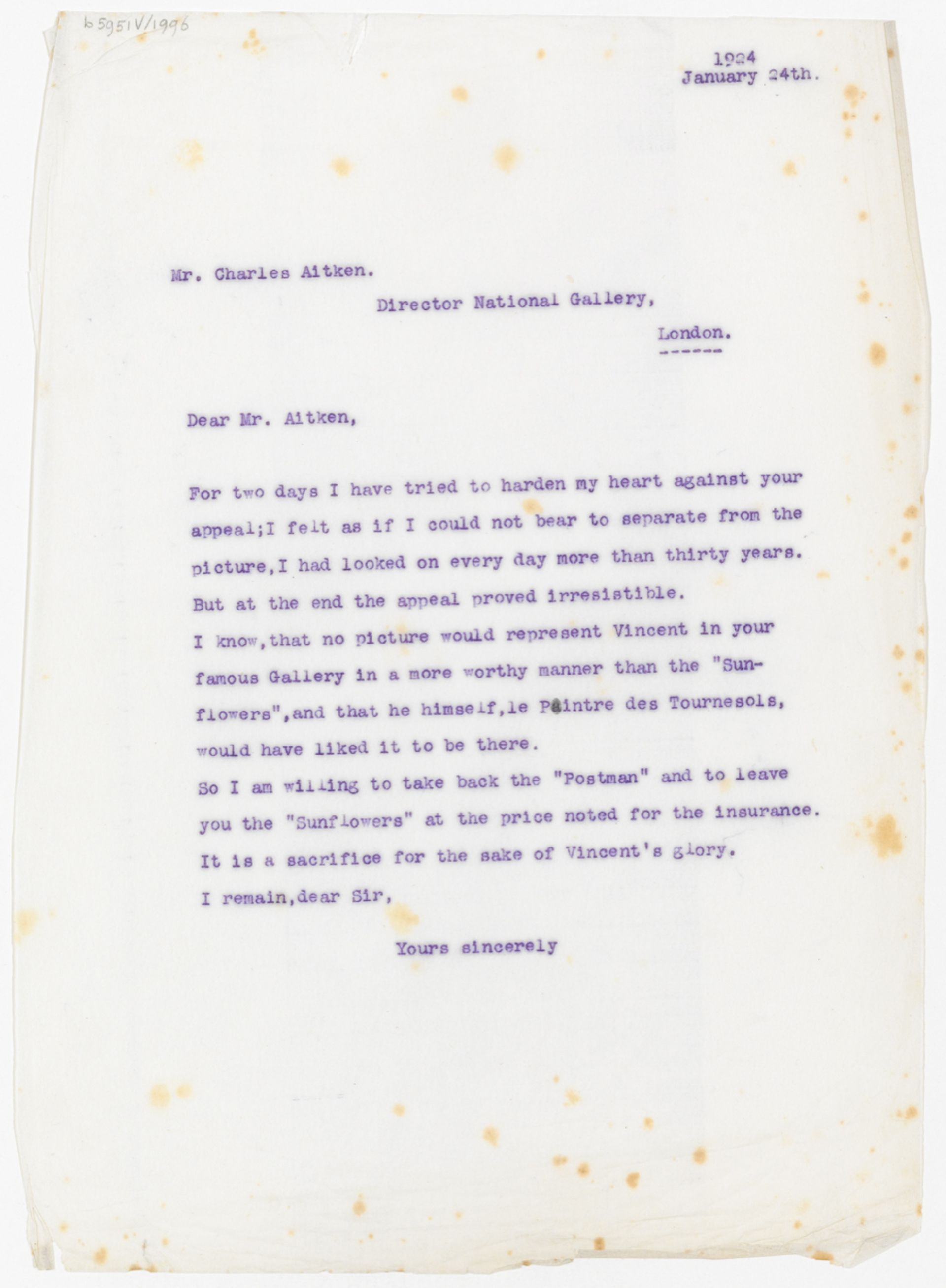
Letter from Jo Bonger (Theo van Gogh’s widow) to Charles Aitken, the director of the National Gallery, London, 24 January 1924 Courtesy of the Van Gogh Museum archive, Amsterdam (Vincent van Gogh Foundation)
Bonger politely refused. "The sunflowers are not for sale, never; they belong in our family," she responded firmly. The National Gallery therefore bought other Van Goghs, but a few weeks later she relented, saying the sale represented “a sacrifice for the sake of Vincent’s glory”. The price was a relatively modest 15,000 guilders (£1,300).
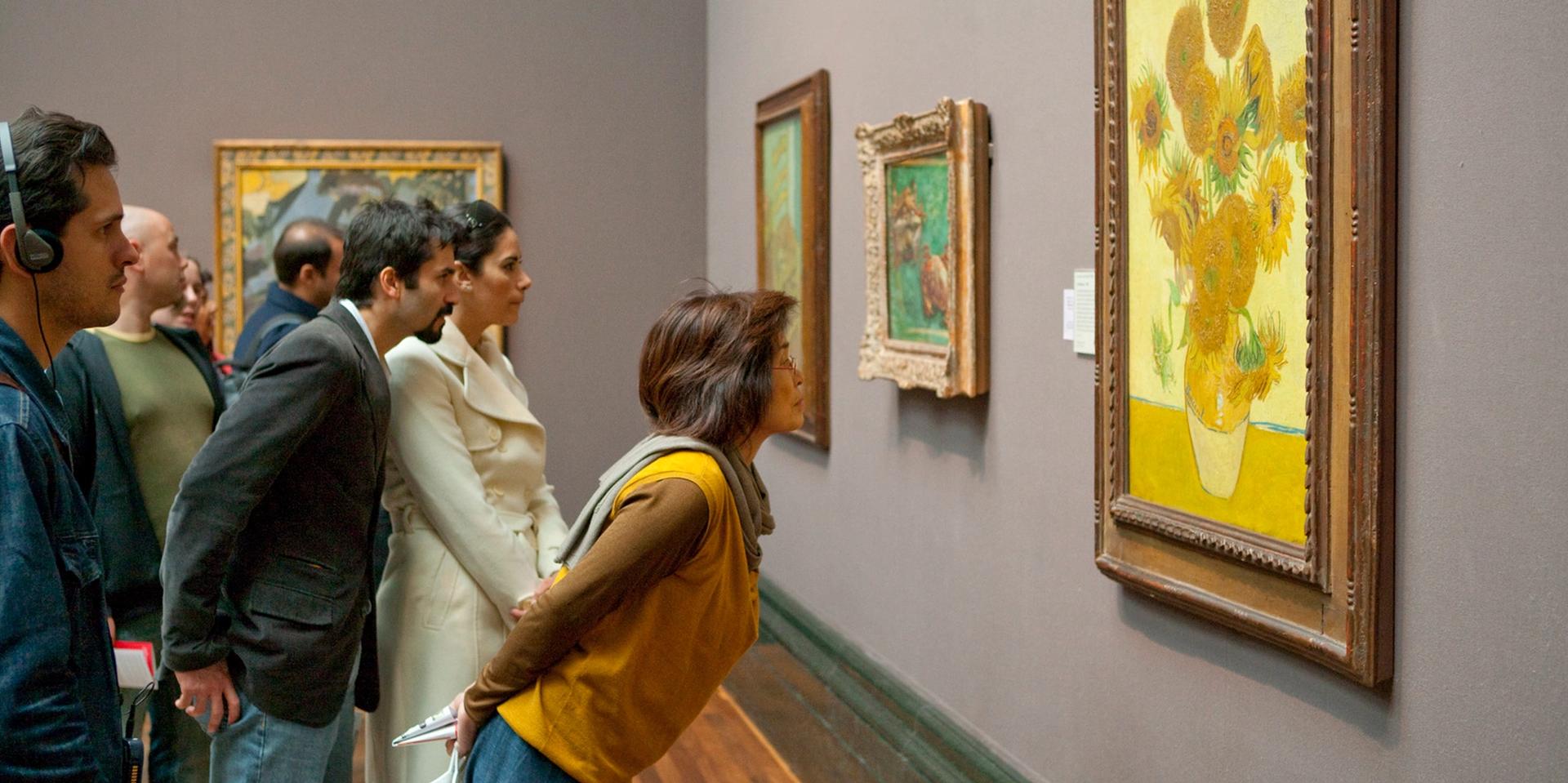
Vincent van Gogh’s Sunflowers at the National Gallery, London, before the international tour Courtesy of the National Gallery, London
The Sunflowers would become the National Gallery’s most loved painting. It is said that the floor in front of the Van Gogh is more scuffed than that in front of any other picture. Londoners wanting to enjoy the uplifting experience of visiting the National Gallery will now have to await its reopening, hopefully in May, and the return home of the Sunflowers a month later.
Other Van Gogh news
La Mousmé (1888) sold at Christie’s, New York on 1 March for $10.4m—a record price for a Van Gogh drawing ($8.8m hammer price, with a $7m-$10m estimate).
We can identify the buyer as London’s Simon Dickinson gallery. It was acquired by the gallery’s James Roundell on behalf of an unnamed private client: “It is an established collector who does not focus on a narrow period. An exquisite work, there has been no Van Gogh figure drawing of comparable quality from this critical period come onto the market for nearly 50 years.”
Neither Roundell nor the new owner were able to actually view the drawing before the auction (although Roundell had seen it at Tate Britain’s 2019 Van Gogh exhibition). He was surprised there was not more competition on the night, but believes this may have been because of ‘Covid circumstances’.

Van Gogh’s La Mousmé (1888) sold at Christie’s, New York, 1 March Courtesy of Christie's


